 |
 |
 |
| |
Declining HCV incidence following rapid HCV treatment scale-up in a prison network in Australia: evidence of treatment as prevention from the SToP-C study
|
| |
| |
EASL Aug 27-29 2020 virtual
Reported by Jules Levin
Behzad Hajarizadeh1, Jason Grebely1, Marianne Byrne1, Pip Marks1, Janaki Amin1, Hamish McManus1, Tony Butler1, Peter Vickerman2, Natasha K Martin2,3, John G McHutchison4, Diana M Brainard4, Carla Treloar5, Andrew R Lloyd1,6*, Gregory J Dore1* on behalf of the SToP-C study group
1. The Kirby Institute, UNSW Sydney, Sydney, Australia; 2. School of Social and Community Medicine, University of Bristol, UK; 3. Division of Global Public Health, University of California San Diego, USA; 4. Gilead Sciences, Inc., USA;
5. Centre for Social Research in Health, UNSW Sydney, Sydney, Australia; 6. Justice Health & Forensic Mental Health Network, New South Wales, Australia; *Andrew Lloyd and Gregory Dore contributed equally as the senior authors
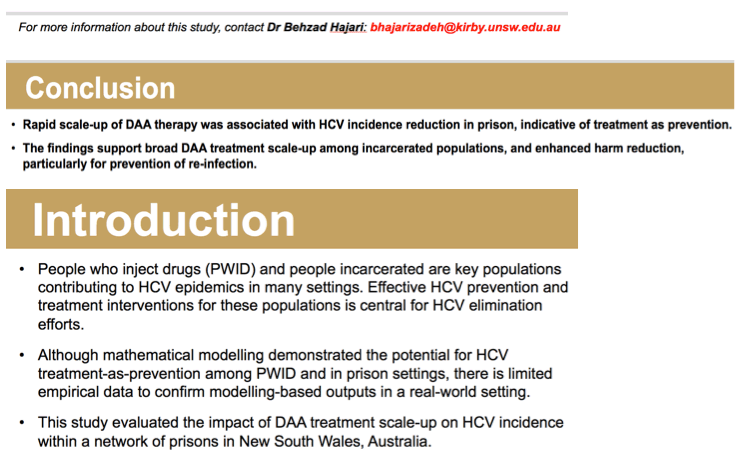
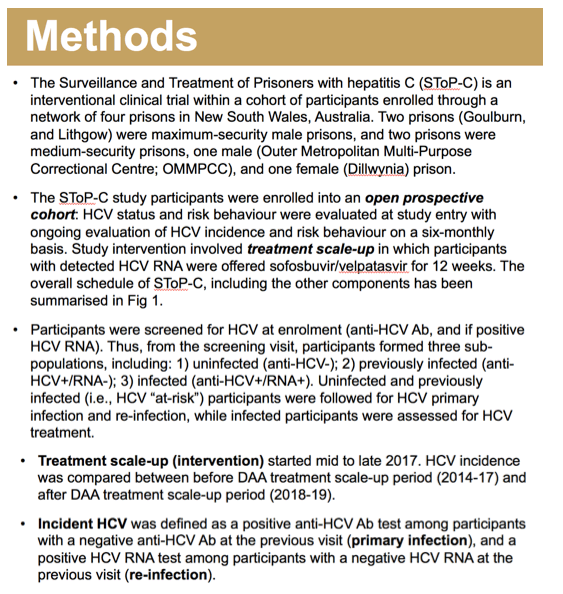
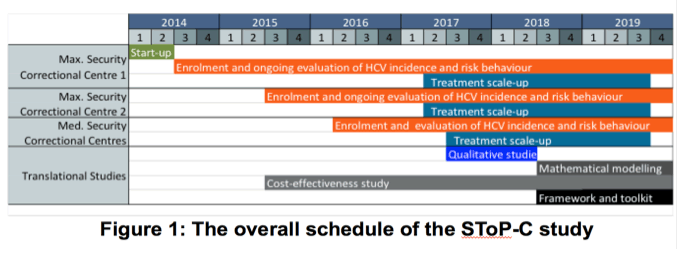
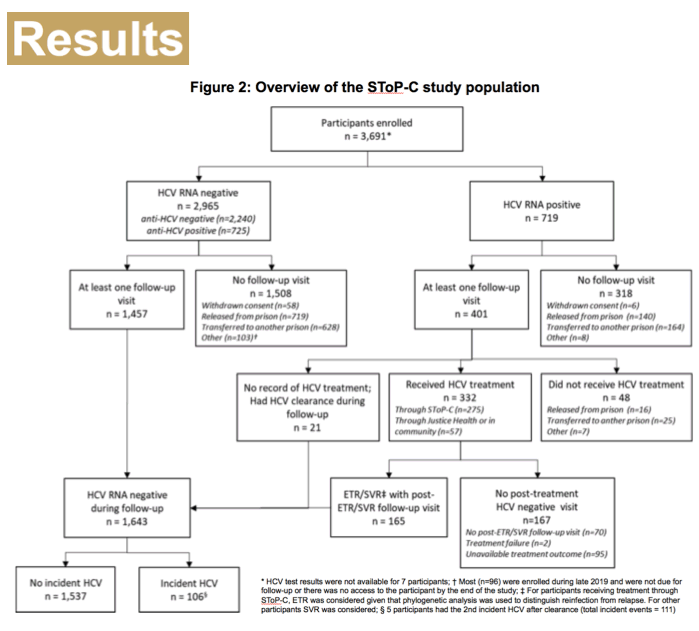
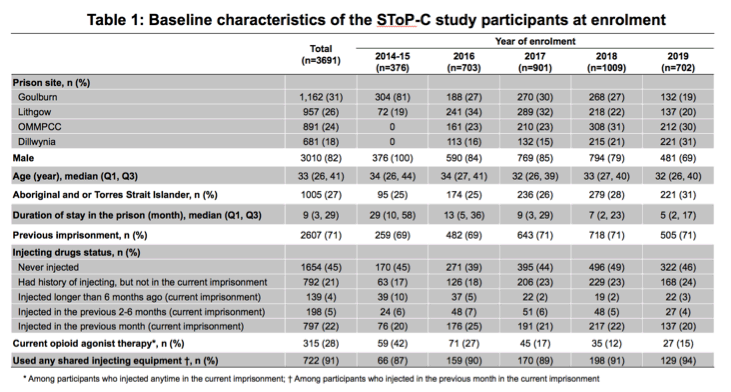
Figure 2: Biannual incidence of all HCV infection (A, B), primary HCV infection (C, D), and HCV re-infection (E, F) in the SToP-C study
The time period between October 2014 and June 2016 was merged to increase person-years follow-up; In Figures B, D, F, the red solid line represents the observed trend and red dashed line represents predicted counterfactual by removing the effect of the intervention for after 2017
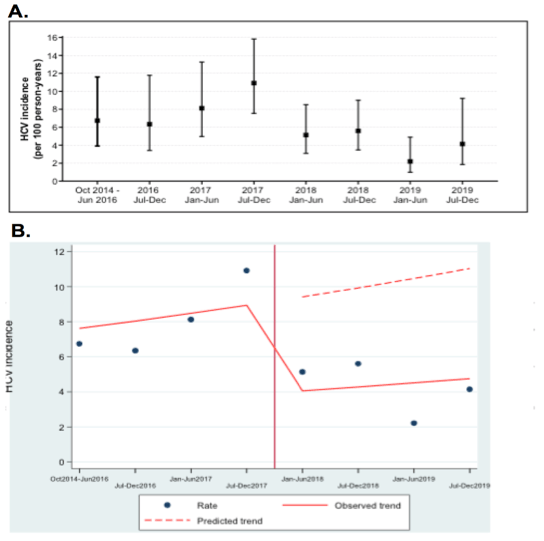

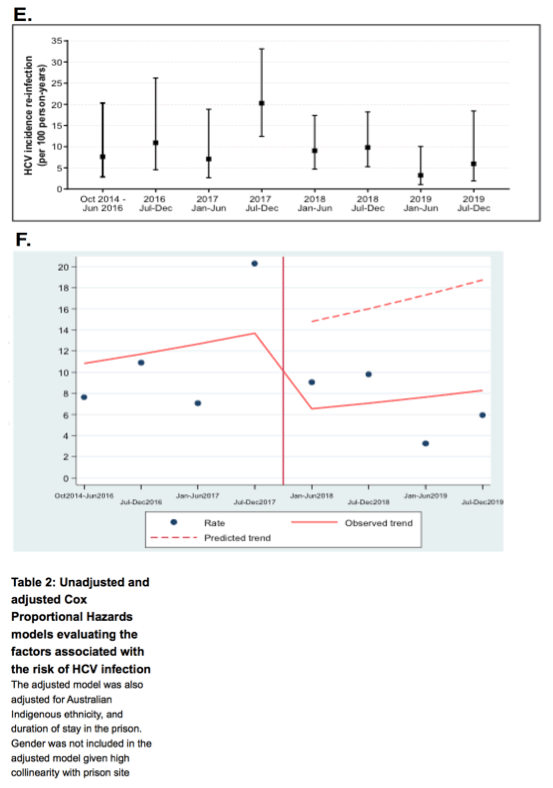

Acknowledgements:
SToP-C is a partnership project involving the Kirby Institute UNSW Sydney, Justice Health and Forensic Mental Health Network, Corrective Services NSW, NSW Health, NSW Users and AIDS Association, Hepatitis NSW and Gilead Sciences, Inc. SToP-C is supported by National Health and Medical Research Council (NHMRC) Partnership Project Grant (APP1092547), and Gilead Sciences, Inc. The opinions expressed in this poster are those of the authors and do not necessarily represent those of Gilead Sciences or NHMRC. The Kirby Institute is funded by the Australian Government Department of Health and is affiliated with the Faculty of Medicine, UNSW Sydney. The views expressed in this publication do not necessarily represent the position of the Australian Government.
|
| |
|
 |
 |
|
|